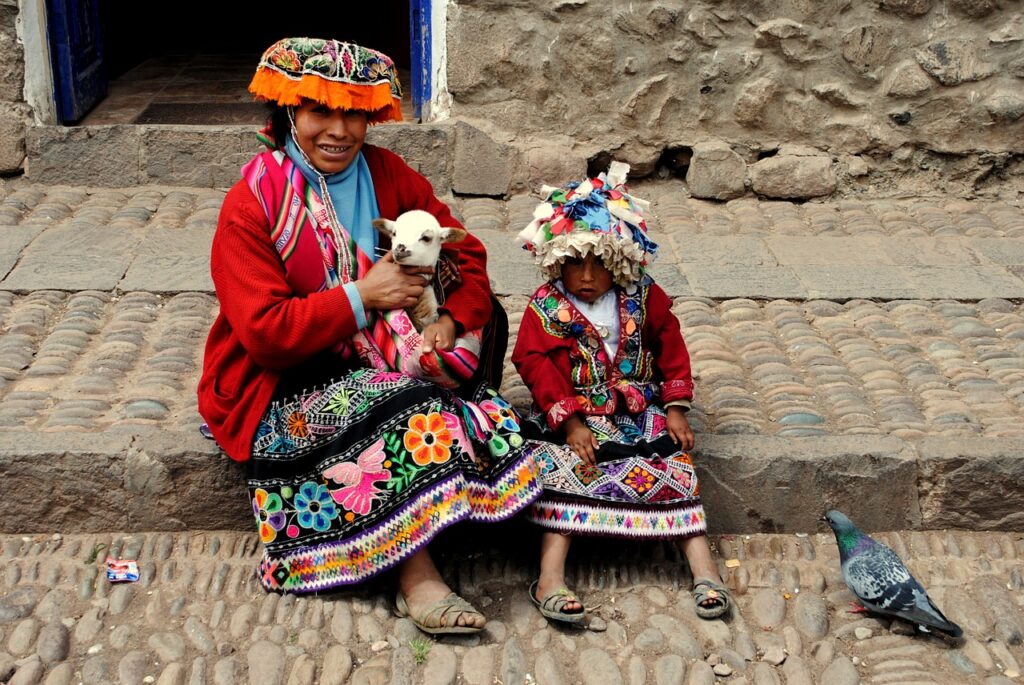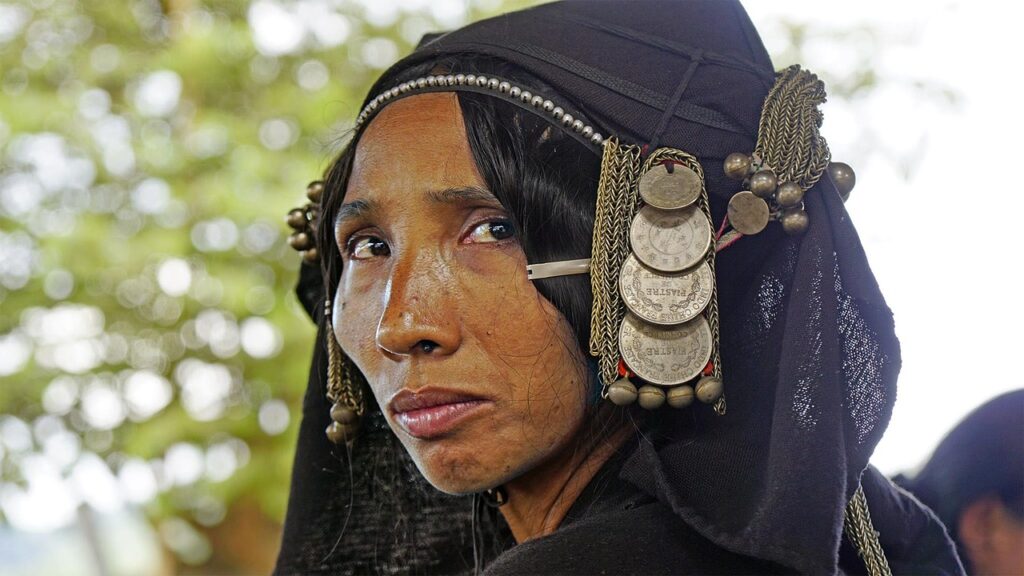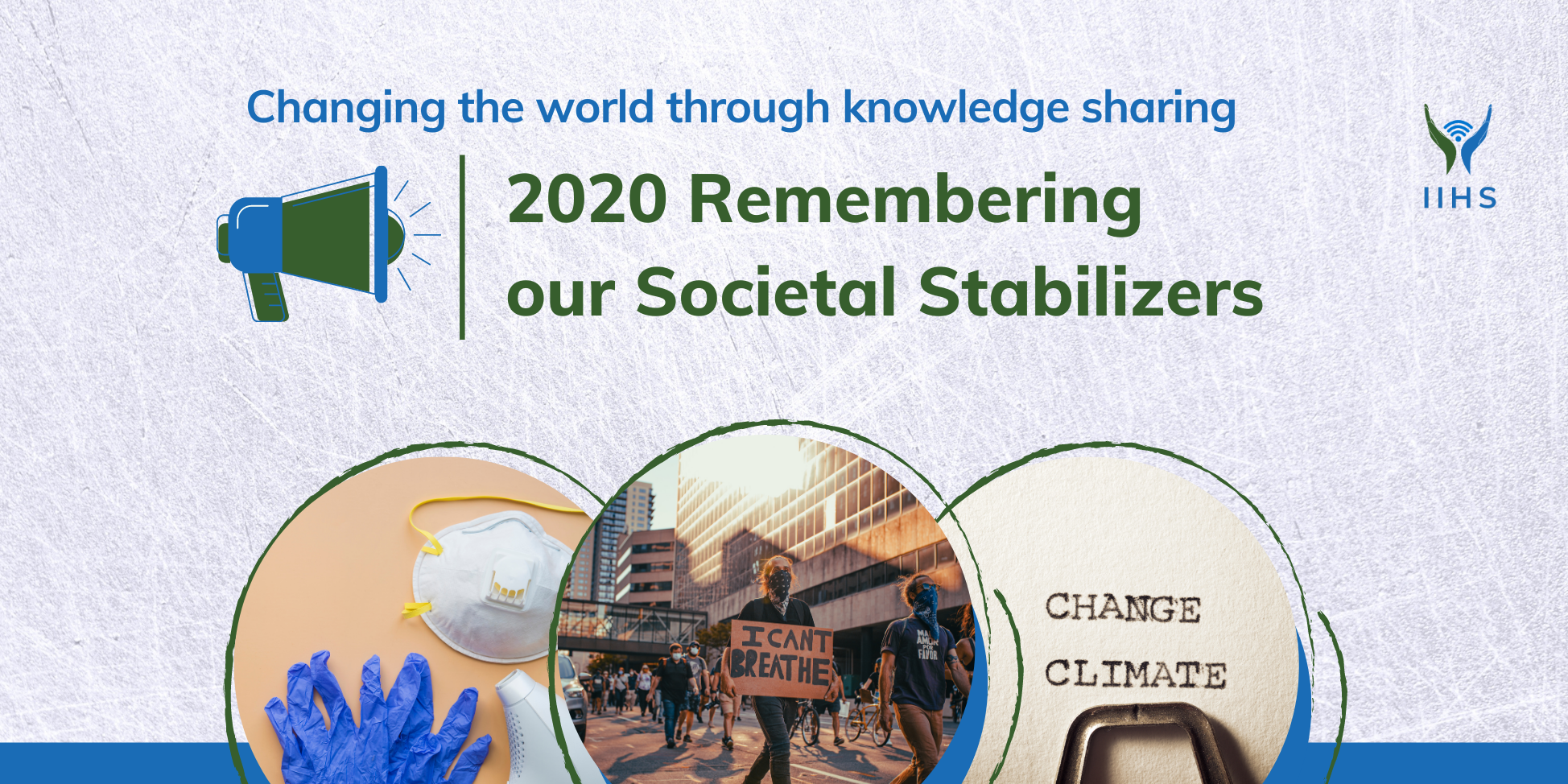The final article in our 2020 series, Remembering our Societal Stabilizers was written by IIHS Advocacy Associate Sara Mattson at the beginning of the year. While much has changed since then, the message is as relevant and clear now as it was on the day it was written and we urge the world not to forget the threats facing human security that existed before the pandemic and continue to persist today. We invite you to engage with this stabilizer and consider what steps we ought to take in order to move towards security for all as we go into 2021.
The 2020 link: indigenous liberties, peacebuilding and sustaining peace
Historically, indigenous rights stem from the idea of the right to self-determination, which was, in the context of colonialism, denied to indigenous communities for centuries. The first essential characteristic of indigenous rights is thus their collective nature: they are exercised by collectives of people in order to ensure their rights and interests. Indigenous liberties distinguish themselves from minority rights, which are individual rights exercised by persons within the said community. It has proven difficult to make a universal and all-encompassing definition of the terms ‘indigenous peoples’ and ‘indigenous rights’ due to the large variability in size, ideology, and geographical location that different indigenous groups present, as well as due to the question of whether or not the idea of self-determination links to every indigenous group that is defined as such. Some also argue that such a definition is not needed in the first place. Although the discussion of these difficulties goes beyond the scope of this article, as you read it is good to keep in mind that the current definitions often simplify the large diversity of opinions and that interpretational differences still exist in this domain.

Image: Unsplash
After having understood the importance of safeguarding the rights of indigenous groups, a multitude of intergovernmental organizations have taken steps to include these rights in legal instruments. These can be divided into existing and evolving standards. From the different global and regional systems, the most influential system is arguably the United Nations. Firstly, the Declaration on the Rights of Indigenous Peoples, ratified in 2007, is a document solely devoted to the protection of indigenous rights. From the general UN instruments, the most relevant article is the common article 1 of ICESCR (International Covenant on Economic, Social and Cultural Rights) and ICCPR (International Covenant on Civil and Political Rights), which is often applied to indigenous peoples in the context of self-determination.
The ICESCR convention also includes article 27, which grants minority rights: namely, it guarantees that an individual in a minority group shall have the right to exercise their religion and culture in respect to belonging to such a minority. Other relevant instruments include article 30 of the Convention on the Rights of the Child, as well as the ILO (International Labor Organization) Convention 169, which is the only binding international treaty on indigenous rights to date. With regard to the evolving standards, the start of the internationalization of the indigenous rights movement dates back to the 1970s. The movement has steadily grown ever since, and with developments such as the establishment of the UN Working Group of Indigenous Populations and the publication of several new draft proposals for conventions, the process of developing indigenous rights is ongoing.

Image: Pixabay
Indigenous Liberties and Peacebuilding
The present section will explain further some specific situations of peacebuilding and sustaining peace in which indigenous liberties are and have been relevant. Firstly, the theme will be assessed in light of the use of indigenous liberties in post-conflict situations. After this, the application of indigenous liberties to land-related disputes will be discussed.
Peacebuilding, in its most traditional and well-known sense, links to the rebuilding of peace after a period of war or conflict. In today’s world, a war is no longer always a battle between states, but more often a mix of different conflicts in which a multitude of local actors are involved. As a result, the state is no longer always the strongest actor, and it can sometimes be difficult to rely on states for peacebuilding. Most of us look at peacebuilding from the Western, state-centric, point of view, and the value of traditional methods of conflict transformation is thus often overlooked. Instead of following the western–style model of punitive justice, traditional approaches are more future-oriented and focused on restorative justice.
The exercise of traditional methods depends on the existence of a system of community relationships and values, and can thus accommodate cultural and spiritual dimensions inherent in that community. In addition, such methods can better incorporate the aims of smaller groups, and not merely the agendas of states themselves. According to Volker Boege, the strengths of such traditional approaches include their ability to fit into situations of fragile or failed states, their legitimacy due to not being state-centric, their ability to allow for wider participation from all community members, and their ability to focus on the psycho-social and spiritual dimensions, which are often inherent in indigenous communities.

Image: Pixabay
Traditional methods have often proven successful in the context of peacebuilding in areas where indigenous communities are prominent. One example has been peacebuilding that has been taking place on the island of Bougainville after a decade-long conflict in the 1990s. After the conflict, the island did not have an effective system of policing, justice, or courts, which resulted in local traditional leaders assuming responsibility for rebuilding post-conflict. The method of restorative justice was brought back into use, which was a natural transition, as the ancestors of the citizens had utilized it for thousands of years prior to the conflict. Since the conflict in question had been a hybrid one with a multitude of different actors, the locals benefited from the application of a traditional method of peacebuilding making use of the indigenous institutions and methods of dispute settlement already present.
Although not strictly related to peacebuilding in its classic sense, land disputes are also an inherent part of today’s political scene. Containing and dealing with such disputes is important, as not doing so can result in the outbreak of conflict or even war. Land and territorial rights are also an important aspect of the rights and liberties of indigenous peoples, as they are crucial to their survival and functioning. For instance, it has been remarked that our current state of property rights does not properly encompass the needs of indigenous peoples. For these communities, land is not a mere usufructuary piece of property but it is also often given value due to its importance in social, spiritual, cultural, and other contexts.

Image: Unsplash
A recent real-life example illustrative of such disputes relates to the Keystone Pipeline, which is an oil pipeline ranging for nearly 3000 miles from Canada to the south of the United States. The pipeline was built in three phases but only started getting wider media attention after an extension proposal, called the Keystone XL. This extension was first approved by the Canadian national energy board in 2010 but then delayed by President Obama due to the refusal to issue a presidential permit. The project was continued, however, when President Trump approved the pipeline right after entering office.
Although the pipeline plan has been criticized from many different perspectives, some of the most persistent arguments have related to indigenous liberties. One important criticism is disregarding the voices and opinions of indigenous people in making the decision to extend the pipeline. According to a speech held by a representative of the Assembly of First Nations (AFN) of Canada, the rights of indigenous people include “the right to free, prior an informed consent over any activities that could affect [their] lands, [their] lives or [their] futures.” In addition to the lack of decision-making power, the pipeline has also been criticized from the environmental impact it could have on indigenous communities living alongside it. Seeing matters from the perspective of those most impacted and whose survival and livelihood depends on an unpolluted natural environment, it is easy to understand how proposals such as Keystone XL might seem like nothing but “dangerous and short-sighted infrastructure projects”. Thus, an extension of a pipeline passing through numerous indigenous communities could seriously threaten the historical and cultural resources of such communities.
Conclusions
This paper has only been able to focus on two larger issues in relation to indigenous liberties and peacebuilding, and there are many more fields that currently lack consideration of indigenous liberties. The present section will summarize the issues dealt with in this paper.
Although western models of peacebuilding contain many strengths and are often applicable to much wider circumstances than the traditional ones, it is good to first verify whether a more local approach to peacebuilding could work better. Western, post-colonial models are regarded as foreign in many communities, and according to many, are not optimal for re-establishing peace and coexistence. It is thus only natural in these cases to adopt a conflict resolution model that is closer to the group’s own habits and customs. It can thus be concluded that where a homogenous community exists, there is potential in traditional methods of peacebuilding, especially in situations where the conflict in question has been a hybrid one in between actors beyond only the state.

Image: Pixabay
Concerning land disputes, two issues stand out with regard to peacebuilding and indigenous liberties. Firstly, the need to efficiently involve indigenous people in decision-making, as voiced by the Assembly of First Nations, needs to be fulfilled. Secondly, it needs to be realized that in the case of a natural disaster, the biggest environmental impact will ultimately be felt by indigenous people. It is therefore crucial to take into account and safeguard their lifestyles when making important political decisions.
Further reading
The following works and articles have been used in the writing of this piece and are suggested as further reading.
Volker Boege: ‘Potential and Limits of Traditional Approaches in Peacebuilding’. In: Advancing Conflict Transformation. The Berghof Handbook II. Barbara Budrich Publishers, 2011;
Daniel Cobb: Say We are Nations: Documents of Politics and Protest in Indigenous America since 1887. University of North Carolina Press, 2015;
Lyuba Zarsky: Human Rights and the Environment: Conflicts and Norms in a Globalizing World. Routledge, 2002;
BBC: ‘Keystone XL Pipeline: Why is it so disputed ?’ (24 January 2017)
CBC: ‘‘A perilous pipeline’: Indigenous groups line up against Keystone XL’ (27 March 2017)







